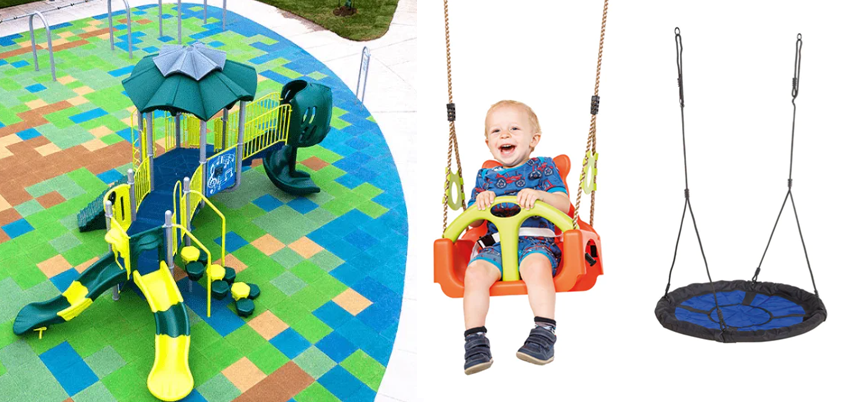Each child is a different world, with particular tastes, different abilities, and skills, even though they share the same age or the same environment. Each child has a unique way of understanding and understanding their environment, with particular interests, times, and speeds, as well as; there are children with special needs either at a learning or physical level; therefore, it is important to have elements within the playground that allow any child to play regardless of their age, condition or capabilities. Inclusive playgrounds have special characteristics that will enable this to happen; therefore, here are five advantages of inclusive playgrounds.
Easy accessibility
One of the main characteristics of an inclusive playground is that they have easy access, which translates into quickly identified entrances and equipment strategically located so that everyone can easily move around and reach them without complications. Additionally, they have ramps and transitions between different surfaces at the same level so that any person, even those using wheelchairs, walkers, or other special equipment, can access and move without inconvenience so that any child can interact with any element of the playground quickly.
Promote non-forced integration
Inclusive playgrounds guarantee the integration of children, allowing everyone to use any equipment without limitations of age, size, or capabilities, making the interaction of children fluid, and combining different types of games with varying levels of difficulty in a way that promotes integration without differences. In this way, children do not feel discriminated against, for example, by having to play only children in wheelchairs in a delimited place. Still, everyone can equally enjoy the experience of a day at the playground since all the equipment is suitable for their use.
Include elements for all tastes
Not all children like crowds, heights, or highly active games; some prefer quiet places or play in small groups; this has been considered in the inclusive playground and therefore has different areas that combine active games and quiet areas for those who want to rest or play more calmly. They can also be places to chat or watch other children play without feeling left out.
It helps develop the senses
Playgrounds are not designed just for the child to have fun but to learn and develop their skills. Some of the essential elements included in inclusive playgrounds are those that stimulate children’s senses; whether they are musical instruments to activate sound stimuli or sand games to differentiate textures, these are just some examples of equipment that help neuronal receptors to fine-tune their functions, sharpening children’s senses and enhancing their abilities.
Avoids discrimination
This type of playground considers everyone through its accessible spaces and games that seek as many children as possible to share and enjoy the game experience looking beyond the physical, emotional, or intellectual limitations they have. The inclusive playground bets on empathy, companionship, and fraternity to see beyond differences and understand that the value of people has nothing to do with their skin color, religion, or economic condition.
What did you think of this topic? What other advantages do you think inclusive playgrounds have?
If you want to know more about this topic, contact us or write your question below (comments section).
